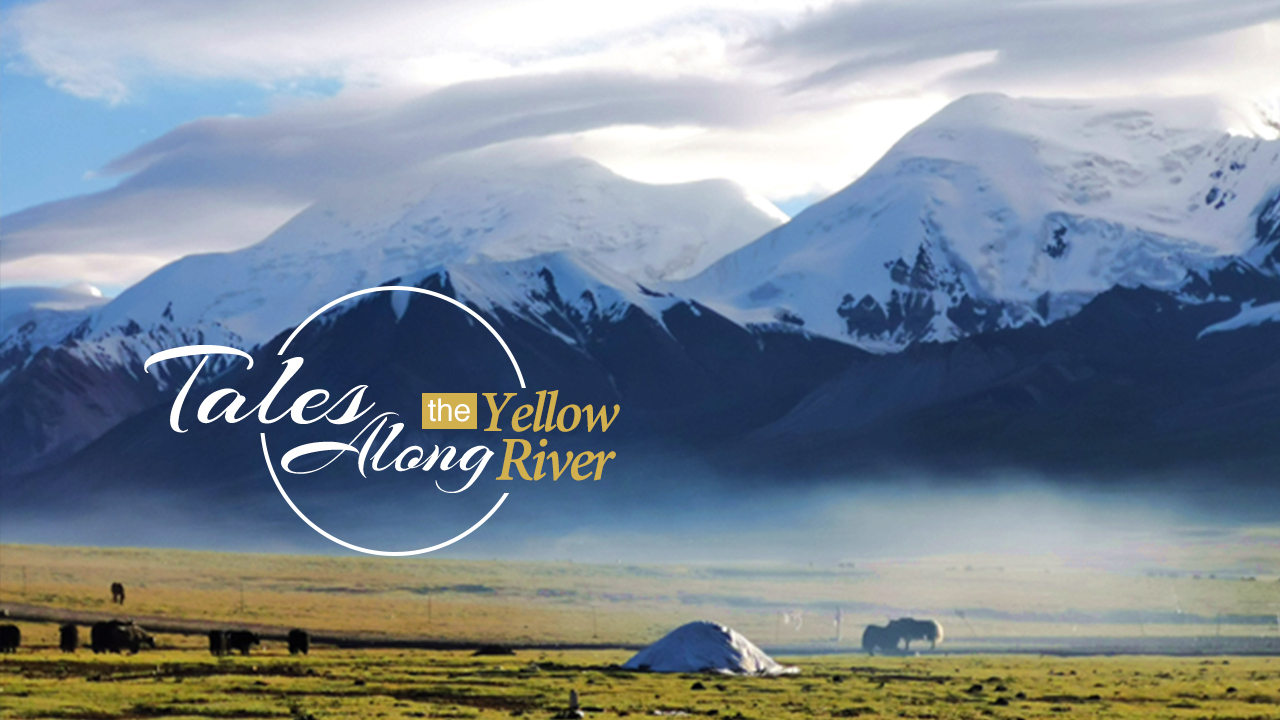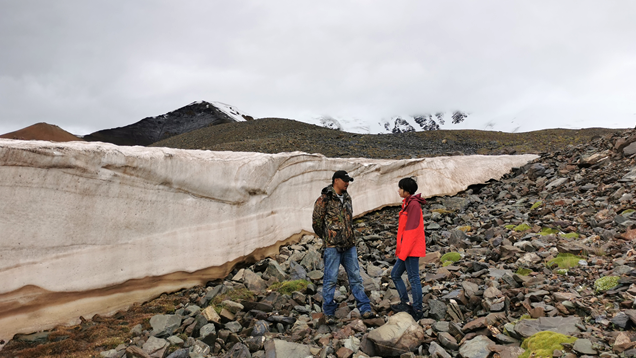

From an underdeveloped nation in 1949 to the world's second-largest economy today, China has come a long way and is still changing at an unprecedented speed.
Now on the occasion of the 70th anniversary of the founding of the People’s Republic of China, CGTN embarks on a journey to look at what changes have been taking place in a region that has symbolic importance to the Chinese: the Yellow River basin.
Known as China's mother river, the Yellow River originates from the Qinghai-Tibet Plateau and flows through nine provinces before it empties into the Bohai Sea. Starting from August 26, CGTN reporters Cui Hui’ao, Xu Mengqi and Zhao Yunfei take you through each of the nine provinces in our special series "Tales along the Yellow River."

Awang Jikmed, the founder of Plateau Nature Conservancy, tells CGTN reporter Xu Mengqi that glaciers on Mount Amnye Machen have been retreating over the last 10 years due to climate change. /CGTN Photo
When CGTN reporter Xu Mengqi decided to follow Awang Jikmed, a Tibetan conservationist, for a field trip to the source of the Yellow River, she was intrigued by what he calls "bio-cultural diversity" and "sacred nature sites."
In Tibetan culture, local people revere some mountains and lakes in the region for their religious beliefs and now studies have found out such places often boast a richer bio-diversity as well.
Over the past decades, degradation of grasslands at the source of the Yellow River, for which scientists blame overgrazing and climate change, has led to an eco-migration policy that moved nomads by the tens of thousands off the grasslands at Sanjiangyuan, or "Three Rivers Source," a national nature reserve in Qinghai that contains the headwaters of the Yangtze, Mekong/Lancang and Yellow rivers.
This story is about a more symbiotic way of conservation, in which Tibetan cultural values and religious beliefs are being incorporated to engage local herders.
It is also a story about two Tibetans who care deeply about the environment they grow up in – a place with untouched natural beauty.
(Cover image via CGTN)

Copyright © 2018 CGTN. Beijing ICP prepared NO.16065310-3
Copyright © 2018 CGTN. Beijing ICP prepared NO.16065310-3